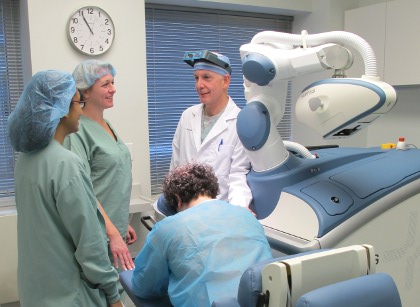A recently published study ((Bater KL, Ishii M, Joseph A, Su P, Nellis J, Ishii LE. Perception of Hair Transplant for Androgenetic Alopecia. JAMA Facial Plast Surg. 2016 Aug 25. doi: 10.1001/jamafacial.2016.0546.)) is the first to measure the perceived benefit of hair transplantation on a patient’s age, attractiveness, successfulness, and approachability – key factors that play an important role in workplace and social success. The pilot study, published in the Journal of the American Medical Association Facial Plastic Surgery, found that hair transplant recipients were perceived by others to be 3.6 years younger following their hair restoration surgery. The data indicate that the person’s attractiveness, successfulness, and approachability also showed statistically significant positive changes as a result of hair restoration surgery.
Background
Half of men over 40 experience hair loss. This may be associated with significant adverse psychological effects including reduced self-esteem and self-confidence, plus the social consequences that follow. Prior studies have shown that men who are balding are rated poorly when it comes to attractiveness, likability, and personal and career success. ((Wells PA, Willmoth T, Russell RJ. Does fortune favor the bald? psychological correlates of hair loss in males. Br J Psychol. 1995; 86(pt3):337-344.)), ((Cash TF. Losing hair, losing points? the effects of male pattern baldness on social impression formation. J Appl Soc Psychol. 1990;20(2):154-167.)) This perception motivates men to seek hair restoration in order to improve how they are viewed by others. The new study attempted to quantify, for both patients and their surgeons, the actual benefit of hair transplant surgery on these key perceptions.
Methods
The randomized, controlled study involved 122 participants — 47.5% men, 51.6% women — each of whom were shown a series of 13 sets of before and after hair transplant photos. Of the photo sets, seven showed men before and then after a hair transplant of approximately 1,200 follicular unit grafts. The control group were of men who did not have a hair transplant or any facial cosmetic surgery. Each participant was asked to rate how much younger the “after” photograph appeared, on a scale of 1-10 years. For the other metrics — attractiveness, successfulness, and approachability — the participants used a slider bar to indicate a positive or negative change.
Results
On age, the data showed a range of about one year younger to about six years younger for the “after” photos, for an average of 3.6 years younger in people who had a transplant. The “after” photos for the control group were perceived to be an average of 1.1 years younger, confirming that the post-transplant group appeared younger than the control group. On attractiveness, successfulness, and approachability, study participants rated the “after” photos with scores of 58.5, 57.1, and 59.2, respectively. This amounts to a 17% improvement in attractiveness, 14.2% improvement in successfulness, and an 18.4% improvement in approachability.
Summary
Since the first hair transplants in the 1950s we have observed that surgical hair restoration can significantly improve one’s appearance. Now, for the first time, we have concrete data that shows the extent of the change of perception in the person’s age, attractiveness, successfulness, and approachability that is caused by the hair restoration procedure. This pilot study should be encouraging for prospective patients, as the purpose of hair restoration is not only to improve one’s own self-image, but to improve appearance, attractiveness, and successfulness to other people as well. This study shows that this effect exists in a way that is both measurable and statistically significant.
Posted by





